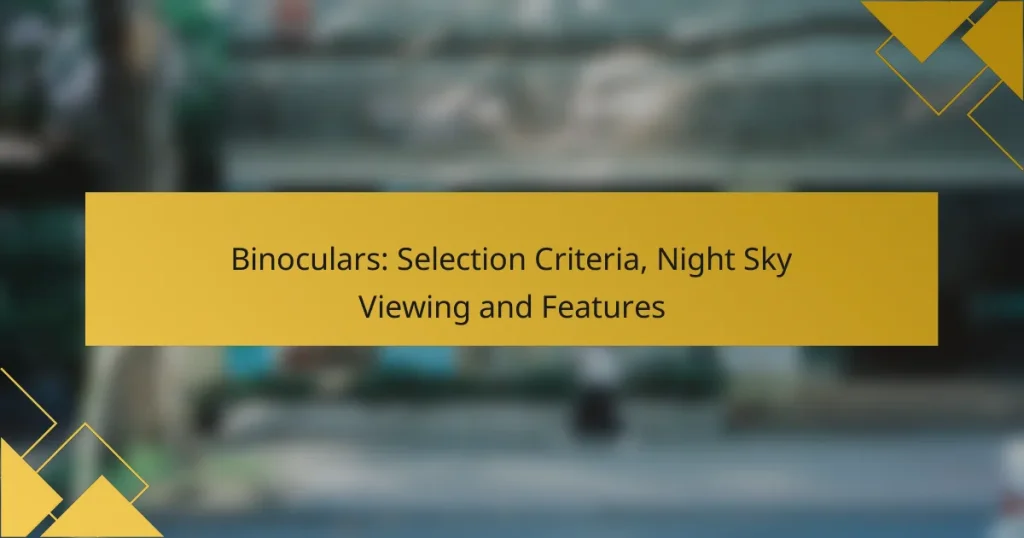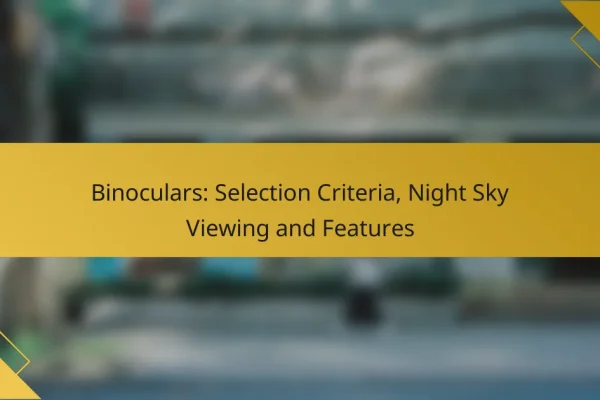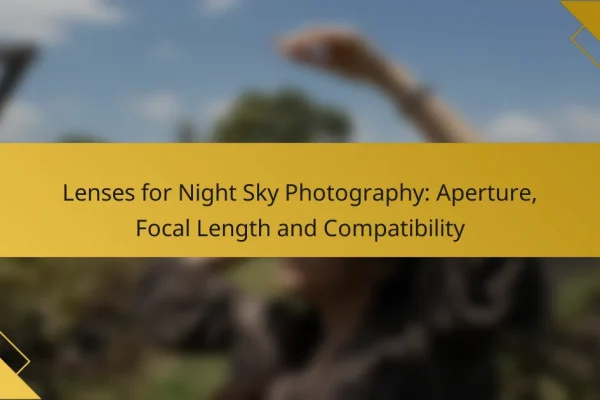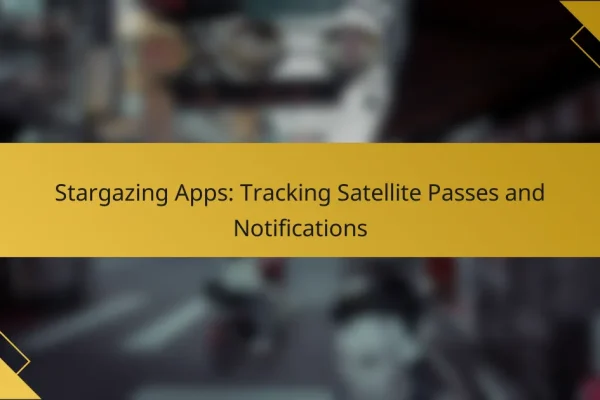
Binoculars: Selection Criteria, Night Sky Viewing and Features
When selecting binoculars for night sky viewing, it’s essential to consider factors such as magnification,…
Stargazing can be a magical experience, and having the right equipment is essential for making the most of it. This ultimate guide covers the best telescopes and binoculars tailored for both beginners and seasoned astronomers, as well as essential accessories that enhance your celestial observations. Whether you're looking to explore the night sky in detail or simply enjoy its beauty, the right tools can transform your experience.

When selecting binoculars for night sky viewing, it’s essential to consider factors such as magnification, lens diameter, and specialized features that enhance clarity and stability. Ideal models typically offer a magnification of 7x to 10x and objective lenses of 42mm or larger, ensuring a clear view of celestial objects. Additionally, features like fully multi-coated optics…

Star finders are essential tools for stargazers, combining ease of use, compatibility with various telescopes, and effective features to locate celestial objects. Devices like the Celestron StarSense Explorer and Meade LX90 offer unique advantages, utilizing celestial maps and user input for accurate tracking. When choosing a star finder, consider factors such as setup simplicity, portability,…

Stargazing apps with augmented reality features revolutionize the way we observe the night sky by overlaying real-time information about stars, planets, and constellations onto your device’s camera view. By utilizing your location and orientation, these apps make it easier for users to identify celestial objects, enhancing both the enjoyment and educational value of stargazing. What…

Stargazing filters are essential tools for both amateur and professional astronomers, enhancing the viewing experience by improving visibility and contrast. Types such as light pollution filters, color filters, and neutral density filters serve specific purposes, allowing for clearer observations of celestial objects by selectively blocking certain wavelengths of light. By reducing glare and highlighting features,…

High-end telescopes are designed for serious astronomers and astrophotographers, offering exceptional optical quality and stability for stunning celestial observations. With features like large apertures, advanced tracking systems, and specialized optics, these telescopes enhance both performance and usability. Notable models include the Canon EF 600mm f/4L IS III USM, Sky-Watcher Esprit 120ED, and Meade LX600-ACF, each…

Organizing your stargazing gear is essential for maximizing efficiency and enjoyment during your celestial observations. By implementing effective storage solutions, such as stackable containers and waterproof cases, you can ensure that your telescopes, binoculars, and accessories are both protected and easily accessible. A well-organized system not only saves time during setup but also enhances your…

When it comes to night sky photography, selecting the right lens is essential for capturing breathtaking celestial images. Lenses with wide apertures, such as f/1.4 or f/2.8, and focal lengths between 14mm and 24mm are ideal, as they allow for maximum light intake and expansive views of the night sky. Understanding the importance of aperture…

Stargazing apps have revolutionized the way enthusiasts track satellite passes, offering real-time notifications and visibility predictions. By utilizing advanced algorithms, these apps alert users when satellites, including the International Space Station, are set to pass overhead, enhancing the overall stargazing experience. When selecting an app, consider features like user-friendly design and augmented reality tools to…

When deciding between binoculars and telescopes, it’s essential to consider your viewing needs and preferences. Binoculars offer portability and a wider field of view, making them ideal for casual stargazing, while telescopes provide detailed observations of distant celestial objects. Understanding the strengths of each can help you choose the right tool for your astronomical adventures….

Stargazing apps are essential tools for both beginners and seasoned enthusiasts, offering user-friendly features that help identify stars, constellations, and celestial events. User reviews and ratings provide valuable insights into the functionality and satisfaction levels of these apps, guiding potential users in their selection process. When choosing an app, consider features like augmented reality, interactive…
The best telescopes for stargazing combine optical quality, ease of use, and portability. Popular choices include models that cater to both beginners and experienced astronomers, offering a range of features to enhance the viewing experience.
The Celestron NexStar 8SE is a highly regarded telescope known for its powerful 8-inch aperture and user-friendly design. It features a computerized mount that allows for easy tracking of celestial objects, making it ideal for both novice and seasoned stargazers.
This telescope is portable, weighing around 20 kg, and can be set up quickly. Its compatibility with various accessories enhances its versatility, allowing users to expand their stargazing experience.
The Orion SkyQuest XT8 is a popular Dobsonian telescope that offers an 8-inch aperture at an affordable price. Its simple design makes it easy to use, especially for beginners who want to explore the night sky without complex setup procedures.
This model provides excellent light-gathering capabilities, allowing users to view faint objects like nebulae and galaxies. Its sturdy base ensures stability during observations, making it a reliable choice for outdoor stargazing.
The Sky-Watcher ProED 100 is a premium refractor telescope known for its exceptional optics and build quality. With a 100mm aperture, it delivers sharp and clear images, making it suitable for both planetary and deep-sky observations.
This telescope is lightweight and portable, weighing approximately 5 kg, which makes it easy to transport. Its dual-speed focuser allows for precise focusing, enhancing the overall viewing experience.
The Meade LX90 is a sophisticated telescope equipped with advanced features like GPS and automatic alignment. Its 8-inch aperture provides excellent light-gathering power, making it suitable for detailed observations of celestial objects.
This model is designed for ease of use, allowing users to quickly locate and track objects in the sky. Its sturdy construction ensures stability, making it a great option for long viewing sessions.
The Vixen VMC110L is a compact and versatile telescope that combines a 110mm aperture with a unique catadioptric design. This makes it suitable for both terrestrial and astronomical viewing, appealing to a wide range of users.
Weighing around 4 kg, it is highly portable, making it easy to take on trips. Its optical design minimizes chromatic aberration, providing clear and crisp images of celestial objects.
Choosing binoculars for stargazing involves considering factors like magnification, aperture, weight, and field of view. The right combination will enhance your celestial observations and make your experience more enjoyable.
Magnification refers to how much larger objects appear through the binoculars, while aperture is the diameter of the objective lens, measured in millimeters. A common recommendation for stargazing is binoculars with a magnification of 7x to 10x and an aperture of 30mm to 50mm. This balance allows for clear images of celestial objects without excessive shaking.
Higher magnification can make it difficult to keep objects in view, especially if you are not using a tripod. A larger aperture gathers more light, improving visibility of faint stars and deep-sky objects. However, larger binoculars can be heavier and less portable.
Weight and portability are crucial when selecting binoculars for stargazing, especially if you plan to carry them to remote locations. Lightweight models, typically under 2 pounds, are easier to handle and transport. Consider how long you will be holding them; heavier binoculars can lead to fatigue during extended viewing sessions.
Compact designs are available, but they may sacrifice some optical performance. Look for a balance between size and quality, ensuring you can comfortably use them for longer periods without strain.
The field of view is the width of the area visible through the binoculars, typically measured in feet at 1,000 yards. A wider field of view is beneficial for stargazing as it allows you to track moving objects and take in larger sections of the night sky. Binoculars with a field of view of 300 feet or more at 1,000 yards are generally suitable for astronomy.
However, a wider field of view often comes with lower magnification, so consider your priorities. If you want to observe specific celestial objects in detail, you might opt for a narrower field of view with higher magnification. Always test binoculars to find the right fit for your stargazing needs.
Accessories can significantly improve your stargazing experience by providing better visibility, organization, and convenience. Essential items include star charts, red LED flashlights, smartphone adapters, and light pollution filters.
Star charts and mobile apps are invaluable tools for identifying constellations and celestial objects. They provide visual guides that help you navigate the night sky, making it easier to locate stars, planets, and other astronomical phenomena.
When choosing a star chart or app, consider user-friendliness and features like augmented reality, which overlays information on your smartphone's camera view. Popular options include SkySafari and Star Walk, both of which cater to different skill levels.
A red LED flashlight is essential for preserving your night vision while stargazing. Unlike white light, red light does not disrupt your eyes' adaptation to darkness, allowing you to see faint stars and details more clearly.
Look for a flashlight with adjustable brightness settings to minimize light pollution. Compact, lightweight models are ideal for portability, making it easy to carry during outdoor sessions.
Smartphone adapters enable you to attach your phone to a telescope or binoculars, allowing you to capture images of celestial objects. This accessory is particularly useful for astrophotography enthusiasts who want to document their observations.
When selecting an adapter, ensure it is compatible with your device and optical equipment. Many adapters are adjustable, accommodating various phone sizes and telescope eyepieces for versatility.
Light pollution filters help reduce the effects of artificial light on your stargazing experience. These filters can enhance contrast and visibility, making it easier to observe faint objects in the night sky.
Consider using narrowband filters, which are effective for viewing specific wavelengths of light emitted by nebulae and other celestial bodies. Make sure to choose filters that fit your telescope or binoculars properly for optimal results.
The cost of stargazing equipment varies widely based on the type and quality of the gear. Entry-level telescopes can start at around $100, while high-end models can exceed several thousand dollars. Understanding your budget and needs is essential for making the right choice.
Entry-level telescopes typically range from $100 to $500. These models are suitable for beginners and often come with basic features that allow users to observe celestial objects like the moon and some planets. Popular brands in this category include Celestron and Orion, which offer reliable options for novice stargazers.
When selecting an entry-level telescope, consider factors like aperture size and mount type. A larger aperture allows more light, enhancing visibility, while a sturdy mount ensures stability during observations. Look for user-friendly designs that can be easily set up and adjusted.
Mid-range binoculars generally cost between $150 and $600. These binoculars provide a good balance of quality and affordability, making them ideal for casual stargazing and terrestrial viewing. Brands such as Nikon and Vortex offer excellent options in this price range.
When choosing mid-range binoculars, pay attention to magnification power and lens diameter. A magnification of 8x to 10x with a lens diameter of 42mm is a popular choice for stargazing. Additionally, consider features like waterproofing and fog-proofing for durability in various weather conditions.
High-end stargazing accessories can range from $500 to several thousand dollars, depending on the type and complexity. This category includes advanced telescopes, specialized mounts, and high-quality eyepieces. Brands like Meade and Takahashi are known for their premium products.
Investing in high-end accessories can significantly enhance your stargazing experience. For example, a high-quality eyepiece can improve clarity and detail, while a computerized mount can automate tracking of celestial objects. Always research compatibility with your existing equipment to ensure a seamless upgrade.